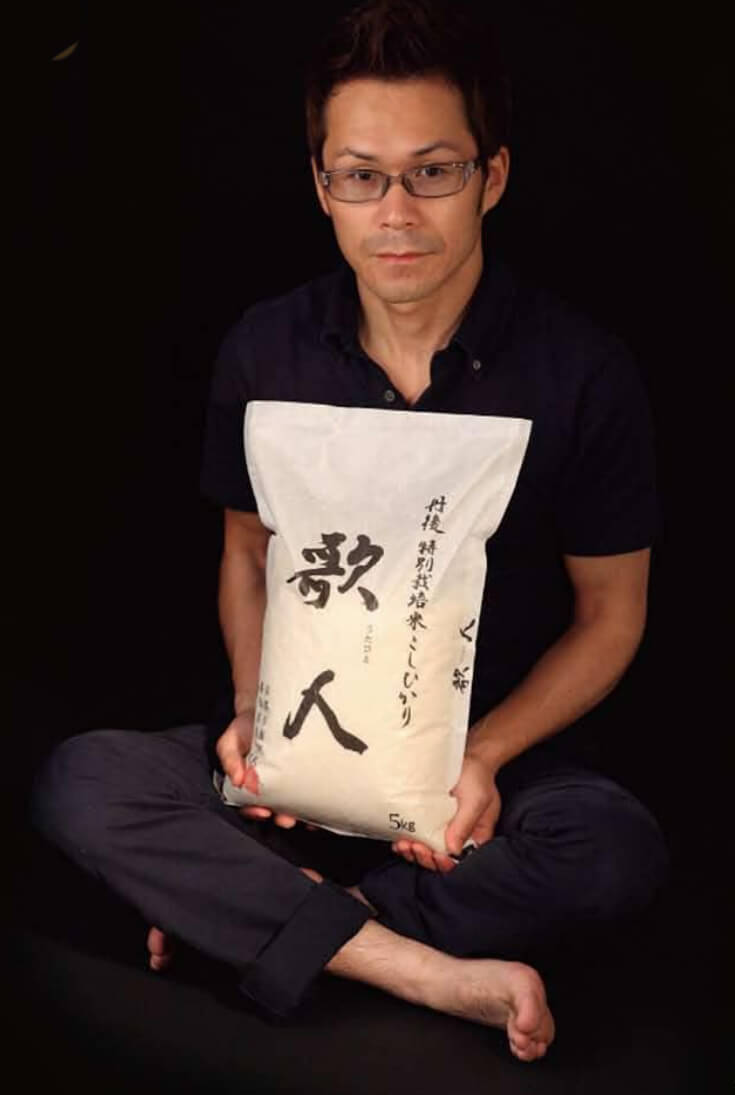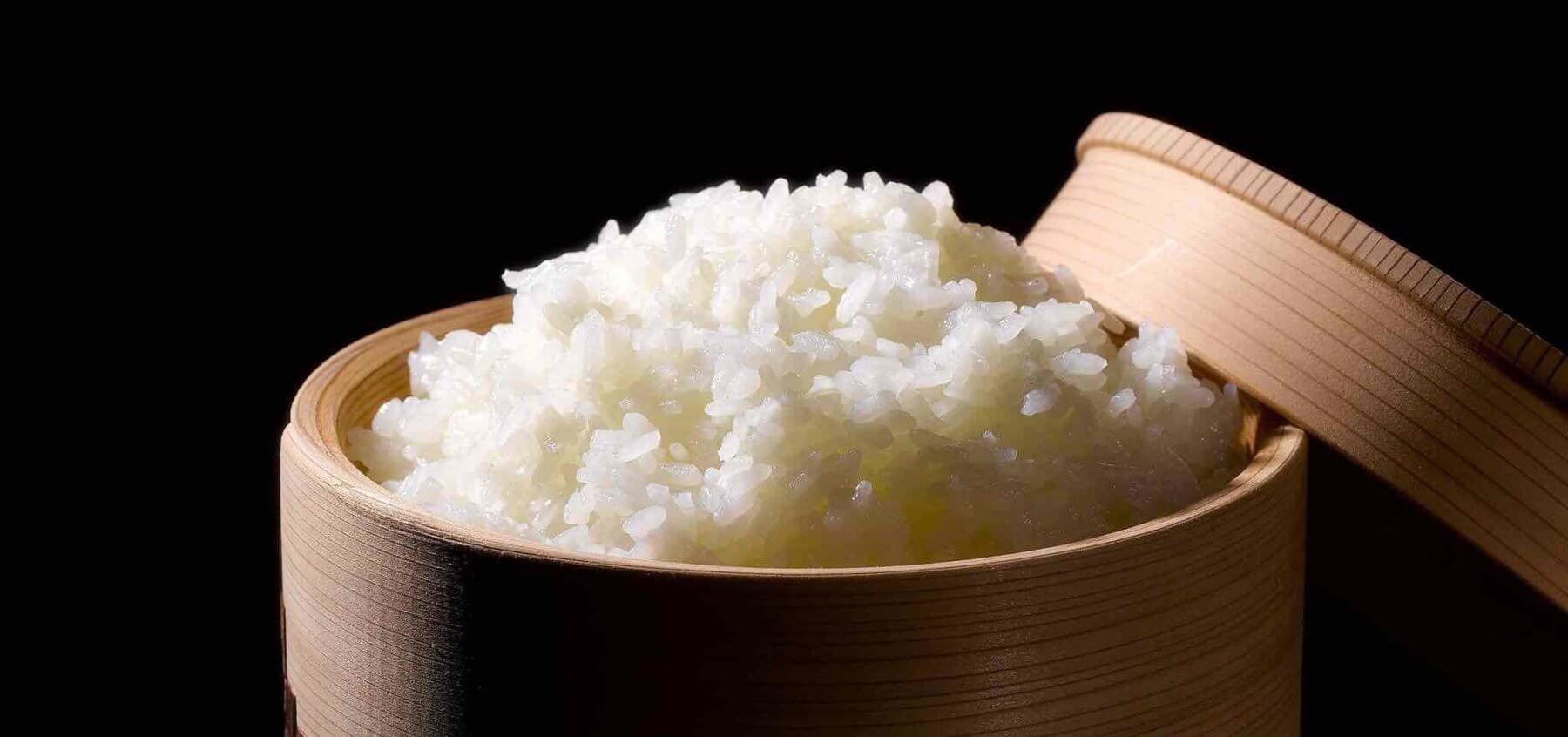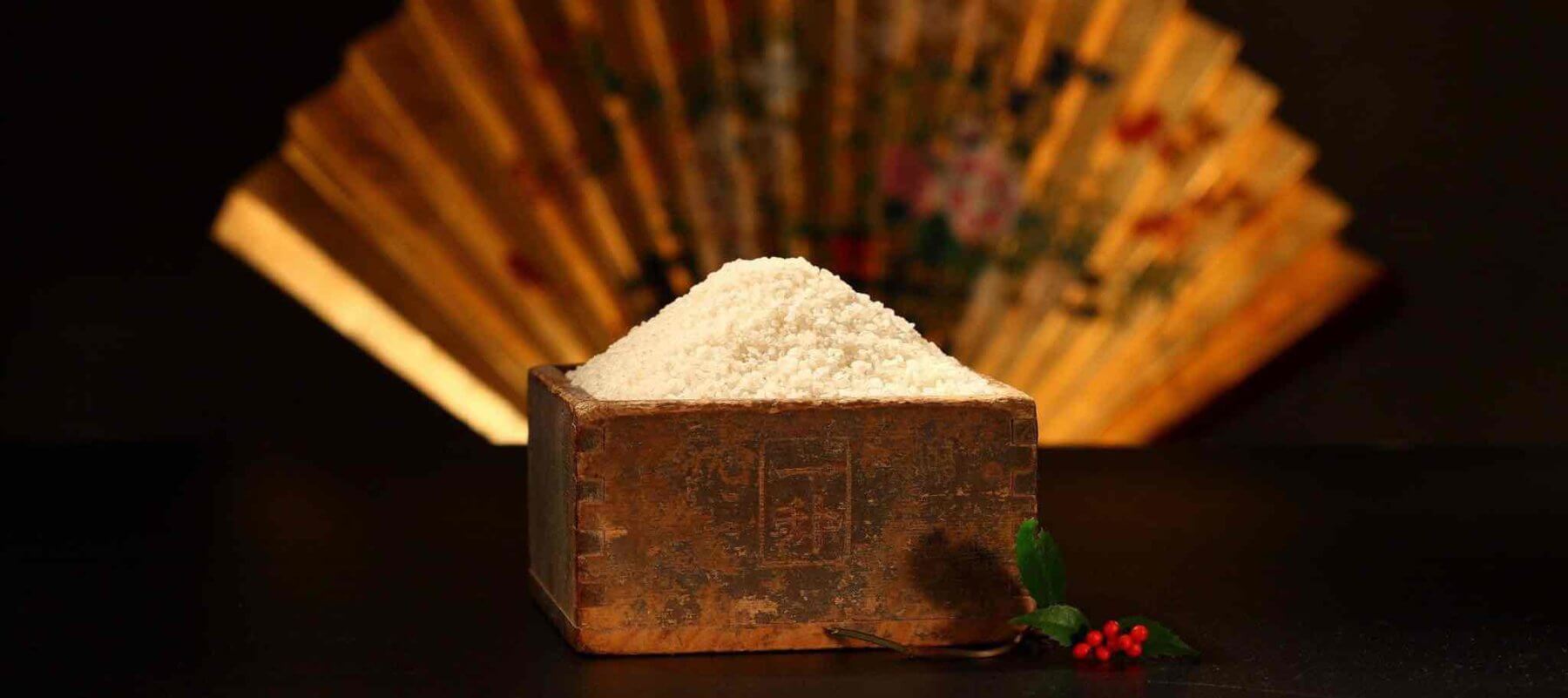An interview with Francesca Bray, who has spent many decades researching the global importance of rice. Beyond the methods of cultivation, Francesca is continually fascinated by the part rice plays in politics and trade networks, modern society and human civilisation.
Tales of a Japanese Rice Grower: Kayama San
As part of a special issue about rice, we talk with Kayama San, who comes from five generations of ancestral Japanese farmers in Northern Kyoto. Beyond continuing the family legacy, he feels a sense of mission and purpose in protecting Japanese food culture, as well as helping maintain the beautiful rural landscape of his homeland.
The Kamaya family cultivate Koshihikari, believed to be the most delicious rice variety in Japan, as well as Hikari, the most famous type of Japanese rice overseas. Their business, Yuki Kyoto Rice, is dedicated to producing the very best golden rice, rich in flavour and texture and unlike anything else we’ve tried before.

A long legacy of rice farming
My family are ancestral rice farmers, and I believe we have a responsibility to protect the rice fields and farmlands in Japan. Protecting agricultural land equals protecting rice culture: even in the present age when foods from all over the world are gathered, rice is always in the middle of Japanese cuisine. It needs to be safe and healthy, but also delicious. Our mission is to deliver delicious rice while coexisting with nature.
What’s so special about this rice?
Kyoto Yosano rice shines golden because it is grown with an organic fertilizer. It has umami and elasticity. It has a chewy, firm texture and taste. It is delicious and the taste gradually spreads in your mouth, a natural taste that makes you feel the strength of the rice. Each grain of rice stands firmly, making it ideal for rice balls. You can enjoy a non-greasy and elastic texture that is delicious even when cooled.
Our rice has umami and elasticity. It has a chewy, firm texture and taste. It is delicious and the taste gradually spreads in your mouth, a natural taste that makes you feel the strength of the rice.
The golden rice ears of Kyoto no Mamekko rice are obvious – they are overwhelmingly brighter than other rice. You can see that the rice itself is healthy. The decisive factor is using Yosano’s original organic fertilizer Kyoto no Mamekko fertilizer. The natural power of soya bean fertilizer grows nutrients in the soil and keeps the rice healthy, and in the abundant freshwater of Yosano Town and the optimal environment it grows even more powerful and golden, chewy, firm, and delicious. Because it grows slowly, the flavour lasts a long time.
The taste value of rice is expressed on a scale of 100, and the value is given by the total value of the components of “amylose, protein, water, and fatty acid content”. Generally, when the score exceeds 80, it is said to be delicious rice. Yosano’s rice has won the highest rank 12 times in the Rice Taste Ranking – a prestigious award published annually by the Japan Grain Inspection Association.

Protecting the environment
As much as possible, we don’t use any pesticides and we use organic fertiliser. Rice cultivation has become difficult due to global warming – we’ve endured heavy rain, heavy snow, and a lot of abnormal weather in recent years. Throughout the four seasons, I am always worried about the changing weather. When the weather is unseasonable, many pests, weeds, and crop growth are damaged, and even farming methods are disrupted due to changes in the ecosystem. Extreme weather has also destroyed fields that produce crops, such as floods, earthquakes, and tornadoes.

To mitigate such damage, it is necessary to curb greenhouse gas emissions and create a low-carbon society. For this reason, we are adopting farming methods to keep river water beautiful and promoting the use of organic fertilizers that do not burden the environment. We are also pursuing more hopeful agriculture in the future while utilizing ICT (Information and Communication Technology).
Rice cultivation has become difficult due to global warming – we’ve endured heavy rain, heavy snow, and a lot of abnormal weather in recent years. Throughout the four seasons, I am always worried about the changing weather.
Uniquely Japanese
The temperature difference in Japan is the most important factor in rice cultivation here, and makes our rice growing methods different from anywhere else in the world. My town Yosano in northern Kyoto is suitable for rice cultivation, as abundant water flows down from the mountains. Mineral-rich water stored in the mountains, where many virgin beech forests remain, and is poured into the clear Noda River that runs through the center of the town and is transported to paddy fields. Thanks to the results of natural circulation agriculture, the beauty of the clear stream is still maintained, and the run-up of natural salmon has continued for more than 1000 years. Safe, secure, and clean water resources are an important source of delicious rice production.
Protecting the town
If the beautiful rural landscape of Yosano Town becomes a wasteland with weeds, it will ruin the landscape of the town. Paddy ridges act as natural dams to prevent the inflow of sediment from mountains into residential areas and the flooding of rivers during heavy rains. Agricultural land conservation has a great deal to do with people’s lives. In addition, the maintenance of the myriad waterways around the paddy fields is also an important task. In particular, the waterways near the mountains are important points that connect to the entire downstream area. By removing dead trees, ivy, weeds, earth and sand, the flow of water is smoothed and the livelihood of the town, as well as the agricultural land, is protected.
Rice farming is very hard work, and spraying pesticides and fertilizers will reduce the burden on many elderly people. This really harms your health.
Working with wildlife
It is well-known that natural salmon run up the Noda River, a clear stream that flows through the center of Yosano Town, around November. The results of our efforts to protect the environment can be seen from the fact that natural salmon that are not released do not run up unless the water is a beautiful river. Also we can talk about storks, which became extinct in 1971 due to the deterioration of their habitat and poisoning by pesticides. Thanks to the efforts of Toyooka City nearby, with a huge effort in artificial breeding and a plan to return to the wild, storks will soon fly once again to Yosano Town and feed in the paddy fields.

The future of Japanese rice farming
Many Japanese rice farmers are very elderly. Rice farming is very hard work, and spraying pesticides and fertilizers will reduce the burden on many elderly people. This really harms your health. We are still young, therefore you can move your body and work hard: health is the most important thing. I think that the number of young rice farmers will increase in the future, and I’m sure Japanese rice will be very safe and delicious in the future.
